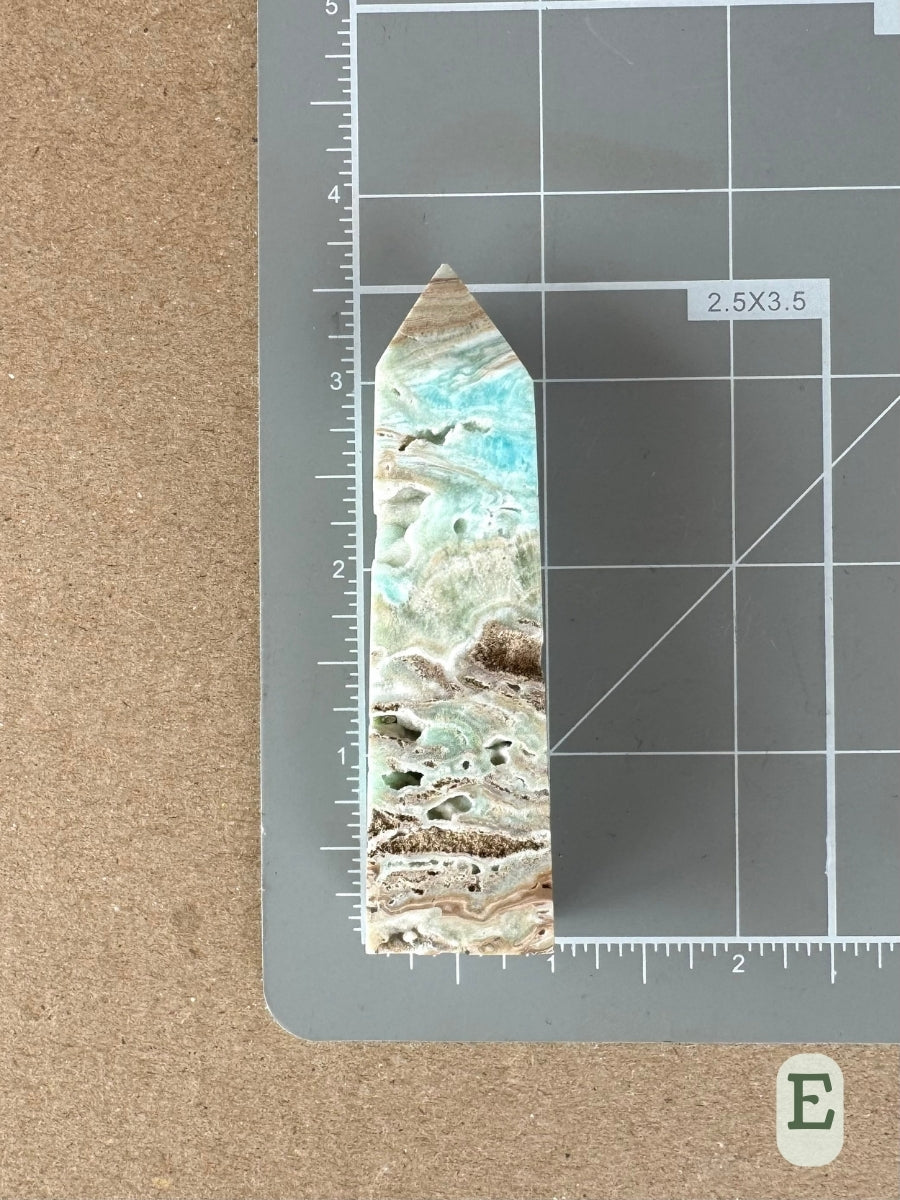Caribbean calcite tower
Caribbean calcite tower
Couldn't load pickup availability
Locale: Balochistan, Pakistan
Approx height:
A 2.5"
B 2.5"
C 3.5"
D 3.25"
E 3.25"
Alternately called points or obelisks, these four-sided towers are cut and polished from blue aragonite. This material is commonly sold under the trade name "Caribbean Calcite" due to its striking color combination of light blue color mixed with white and light sandy brown, reminiscent of waves rolling up a tropical beach. Option E even has a sea gull!
Calcite and aragonite are polymorphs of one another, meaning that the same chemical composition (calcium carbonate) has crystallized into different crystal structures (trigonal and orthorhombic, respectively). Calcite and aragonite often grow together, and the two minerals are also frequent paramorphs of one another—a pseudomorph of the same chemical composition and retaining the original crystal shape but with different crystal structure, created through a change of conditions such as heat or pressure. There is understandably some confusion distinguishing what is calcite, versus aragonite, or a paramorph, or some hodgepodge of all of the above.
This is all to say, this material is something out of that "hodgepodge" category. The calcite, tinted blue, blends into white and brown aragonite. Caribbean calcite typically has alternating colors of twisting, curving layers. This material has some slight translucency to the blue calcite, giving it even more beautiful ocean-like depth. White radial crystal growth extends into the blue.
Note: Towers like this are often cut haphazardly and may not stand straight. In images showing a right angle over the tower, the piece has been rotated to show the most off-square angle.
UV reactivity: Aragonite and calcite are commonly UV reactive and this material does not disappoint! It will fluoresce and phosphoresce using a 365nm UV light, with whiter parts having a stronger reaction. When tested with dark-adjusted eyes, some material can phosphoresce for several minutes.




















































































